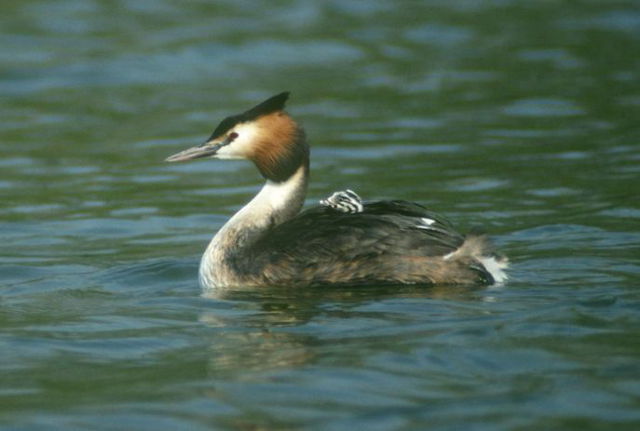More good news in from the RSPB, in their own words. Ed
It is the bird that was almost hunted to extinction and was the inspiration for the founding of the RSPB in 1889. The great crested grebe, which was culled for its feathers to make hats in Victorian times, has started breeding on the Isle of Wight for the first time.
It has been a good year so far for new birds breeding on the Brading Marshes reserve, with Little Egrets and Marsh Harriers also nesting for the first time on the island this year.
Keith Ballard, site manager at Brading Marshes said,
“We recorded great crested grebes a few times this winter, and a couple of weeks ago I noticed there was a pair of them.
“They were doing some courtship and displaying.
“The great crested grebe does an amazing courtship display where they appear to dance on water. It is really spectacular if you can get to see it.
“Last week, one of our volunteers reported that the pair were together and had built a nest.”
Rarely seen on the Isle of Wight
Great crested grebes are frequently seen around the Solent during winter, but rarely on the inland waters of the Isle of Wight and virtually never seen in the vicinity during the Spring and Summer.
Keith went on to say,
“They are attracted to large bodies of inland open water for breeding and this year there is a large enough expanse of water at Brading Marshes for them to make their home and breed.
“It is also about food – there is also enough fish available for the birds to feel secure enough to nest.”
Little grebes, a relative of the great crested grebe, have always been found on the reserve. They are tiny, eat invertebrates such as shrimp, and can be held in the palm of your hand.
Lapwings flourishing
Lapwings are also flourishing at Brading this year, with 12 breeding pairs nesting on the marsh. Lapwings are a red-listed endangered species and the RSPB is encouraging them to breed on its reserves.
These ground nesting birds are also very selective about where they choose to nest. Wet grassland with lots of pools that have muddy edges tick all the boxes for them.
Image: © RSPB Images





